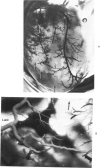Abstract
We studied changes in the coronary collateral circulation during coronary artery occlusion in 14 conscious dogs by: a) determining simultaneous changes in peripheral coronary pressure (PCP) and retrograde flow (RF) after abrupt coronary artery occlusion; b) correlating these functional indices with quantitative anatomic indices (AI) of coronary collateral development (Menick et al: Am Heart J 82:503-510, 1971); and c) observing changes in these indices after repeated reocclusions of a coronary artery. These dogs were subjected to left circumflex coronary artery (LCCA) occlusions for 2 hours to 8 days; pressure tubes were implanted in the aorta and LCCA, the latter tube placed distal to an occlusive cuff for PCP and RF measurements. Afterwards the animals were sacrificed, their hearts injected with a modified Schlesinger's gelatin mass, and AI determined. During 2 to 24 hour LCCA occlusions (11 dogs) mean PCP rose to levels 50 to 80% of prevailing aortic pressure. During repreated 2- to 24-hour occlusions (2 dogs) in the same dog, the rate at which PCP rose increased. Retrograde flow was unchanged during 2- to 24-hour occlusions. Anatomic indices of these dogs were in the same range as those observed in unoccluded controls. When LCCA occlusion was maintained for more than 4 days (3 dogs), mean PCP rose during the first 24 hours and then remained stable; RF did not change until 4 days into occlusion and then increased. Anatomic indices of dogs occluded for more than 4 days were significantly greater (P < 0.001) than those of the 2- to 24-hour occlusion groups. Our study shows that: a) the early PCP rise after occlusion is not associated with an increase in RF, b) RF is a better index of collateral function and c) RF correlated well with the anatomic development of the collateral bed.
Full text
PDF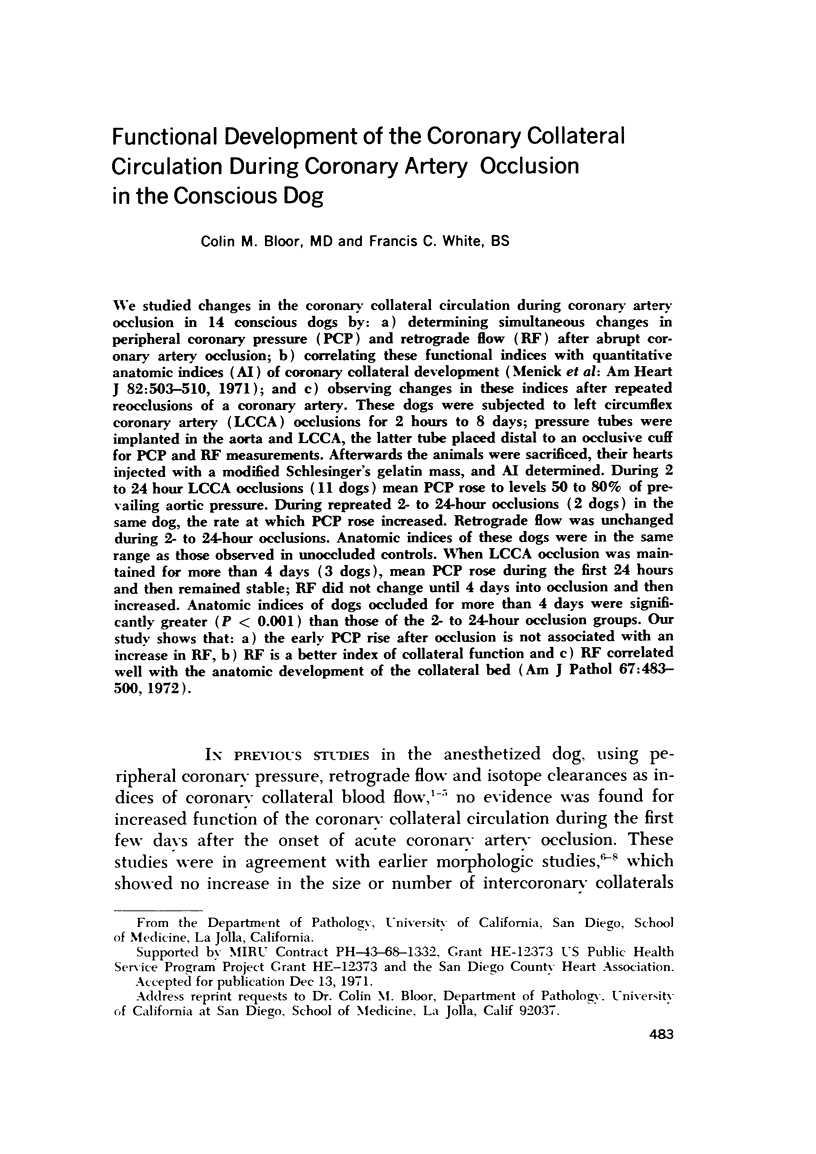
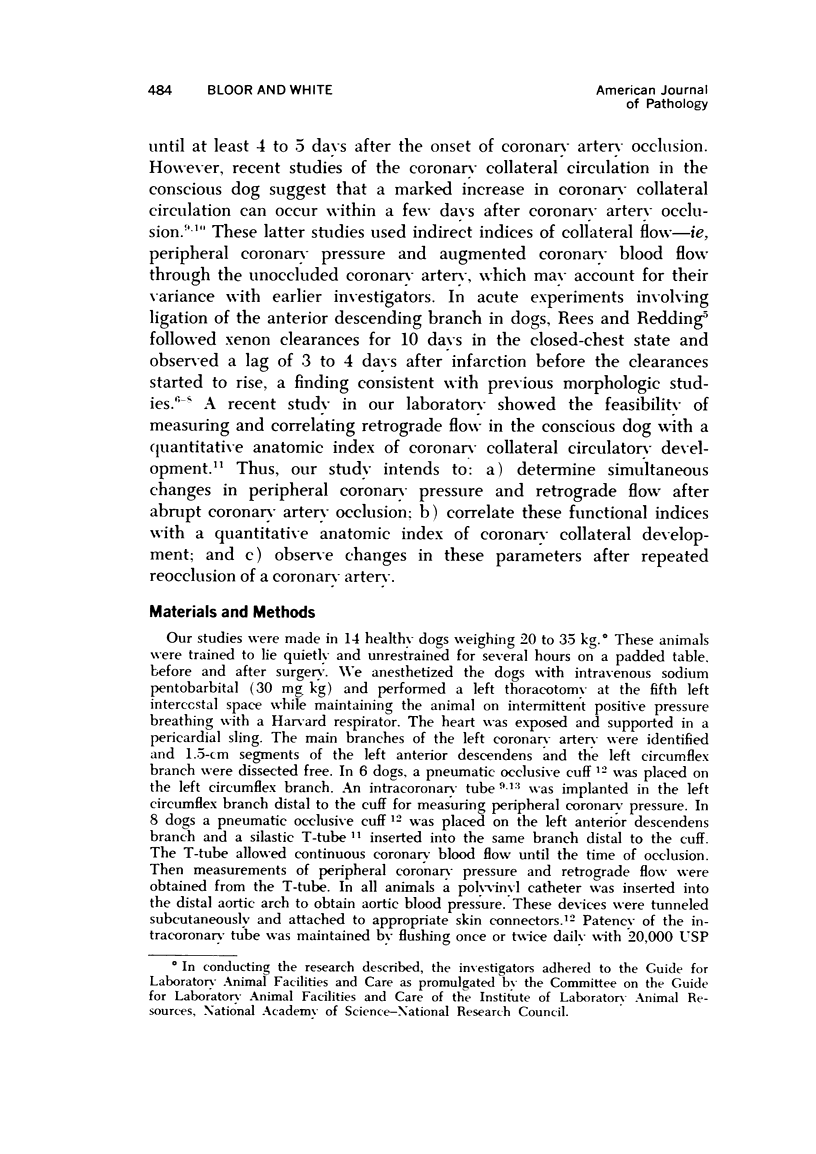
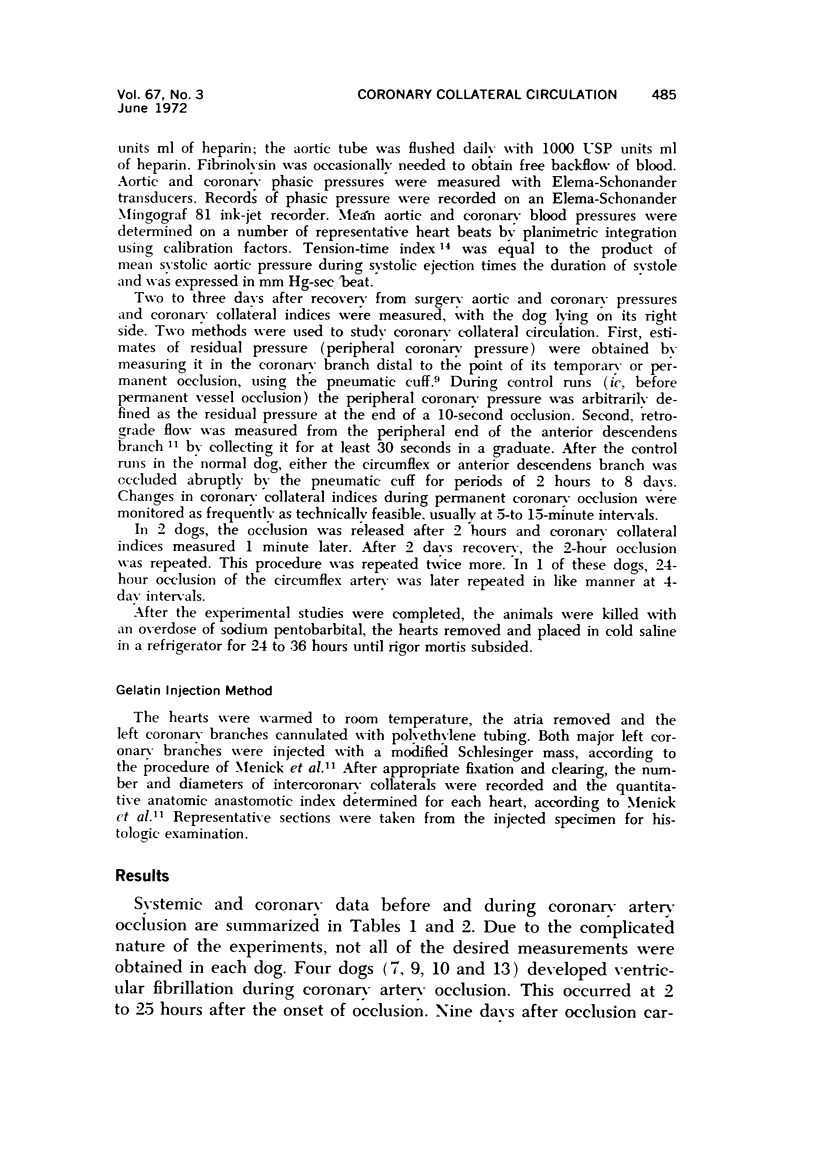
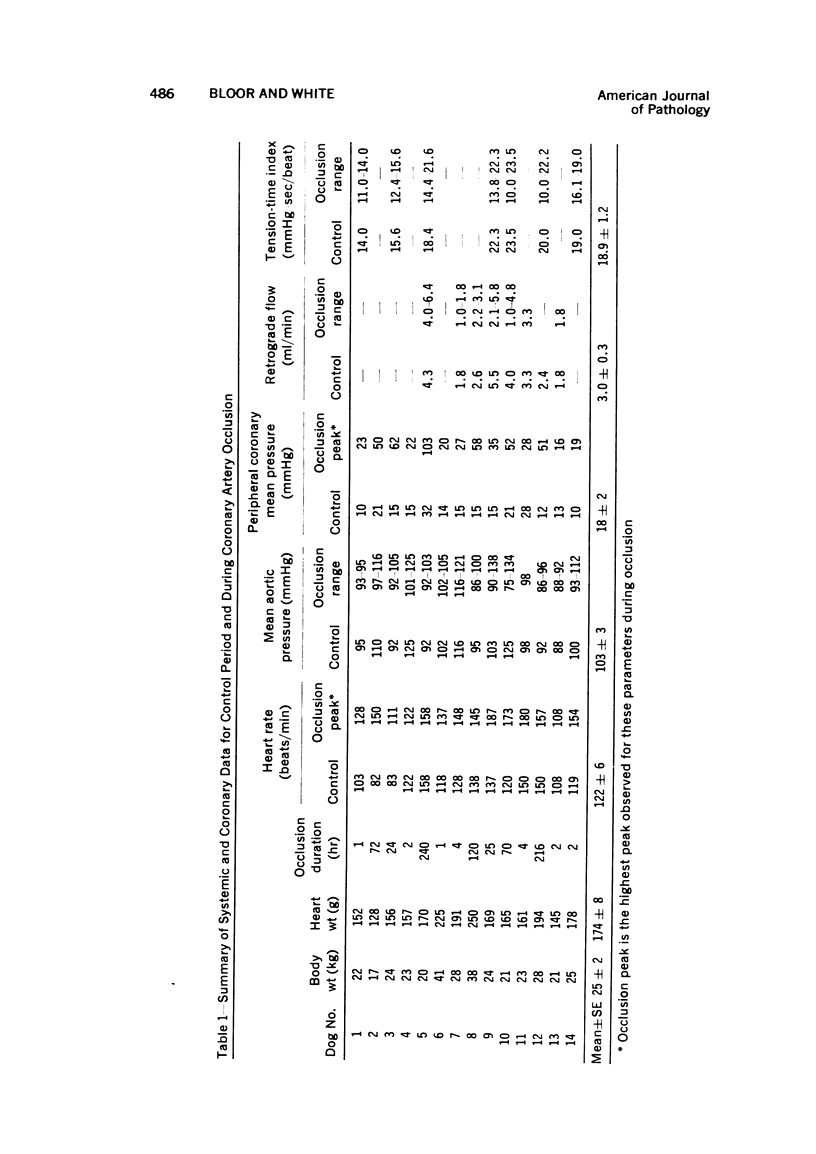
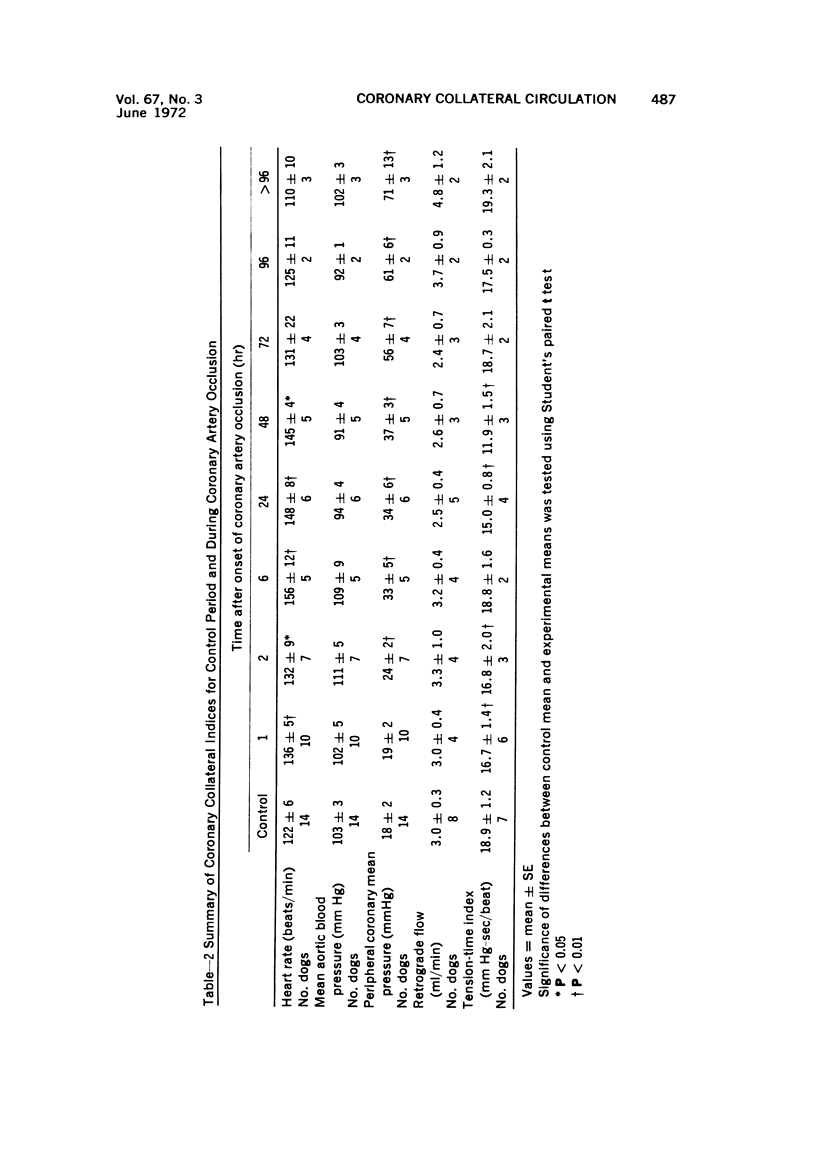
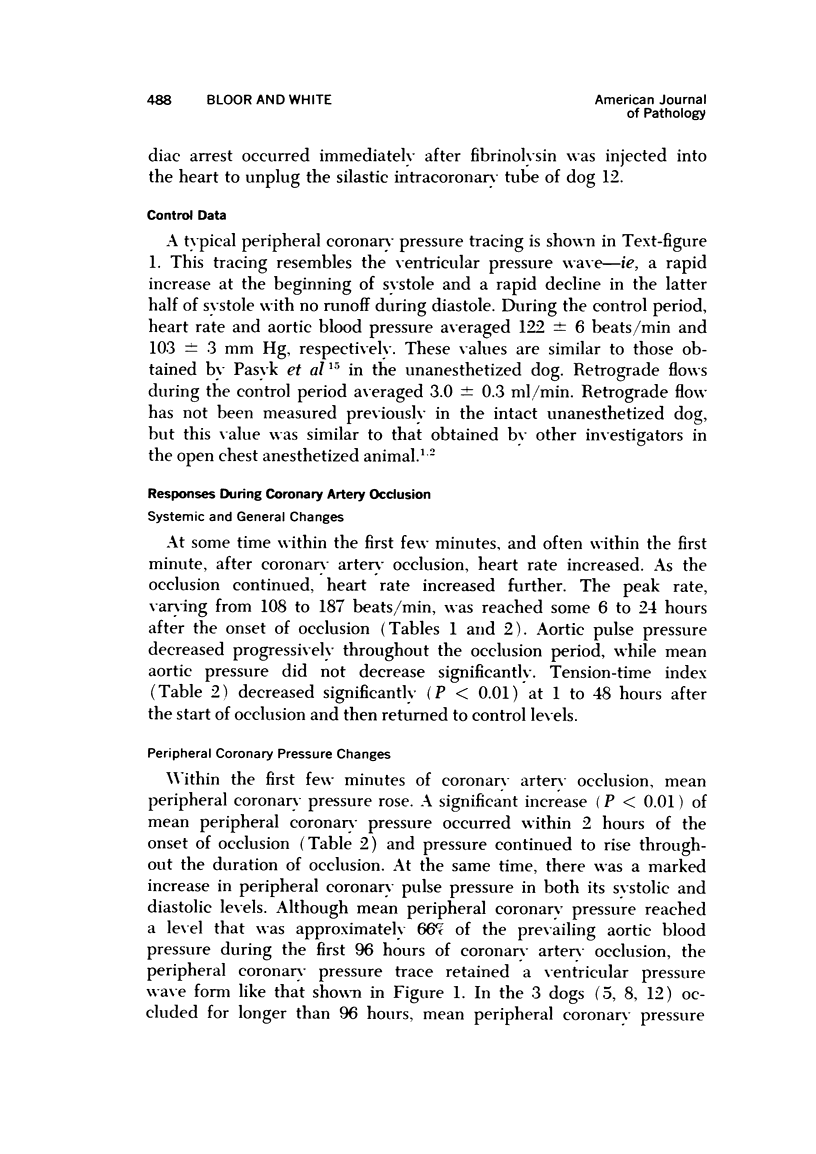
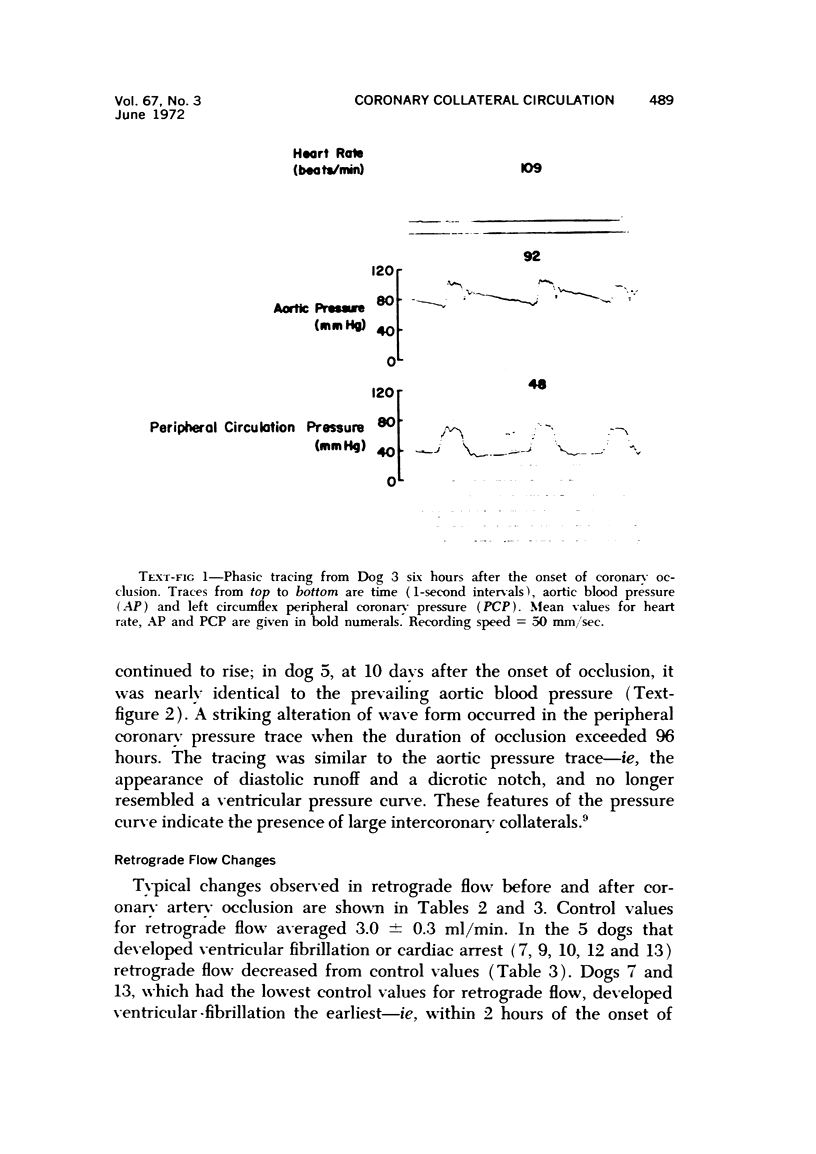
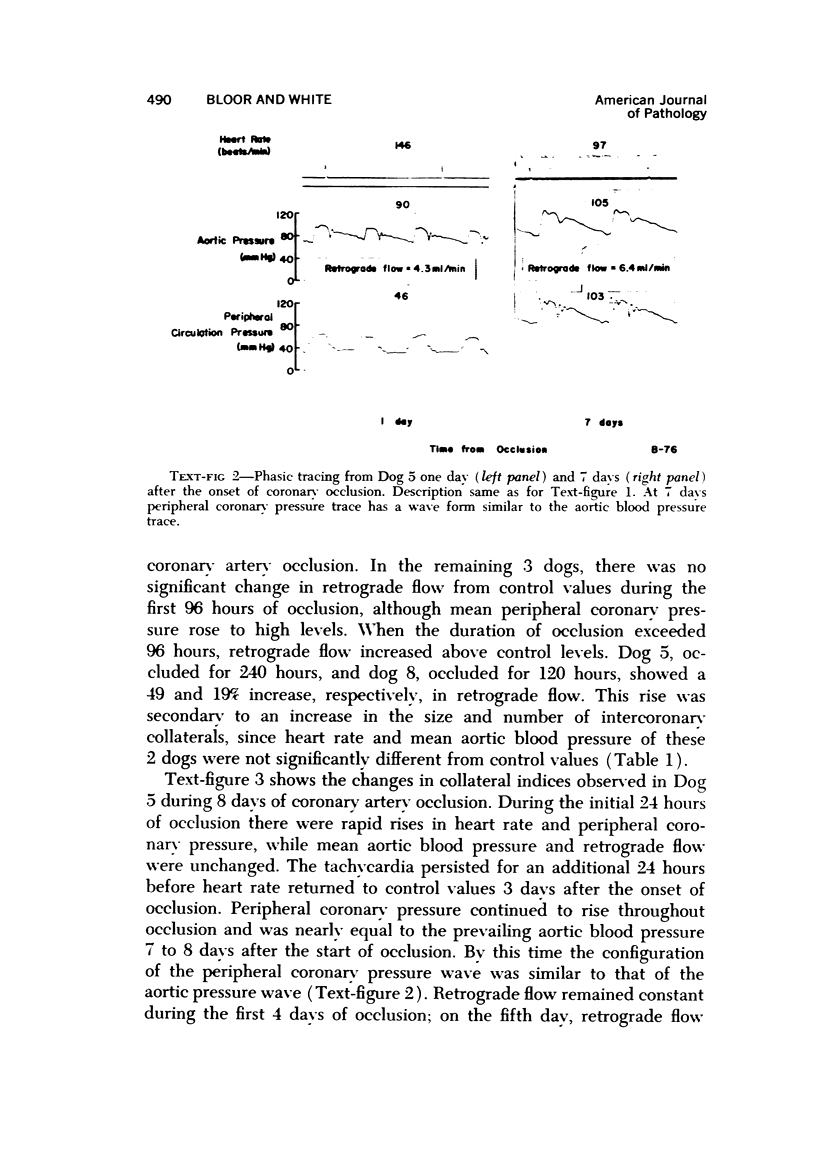
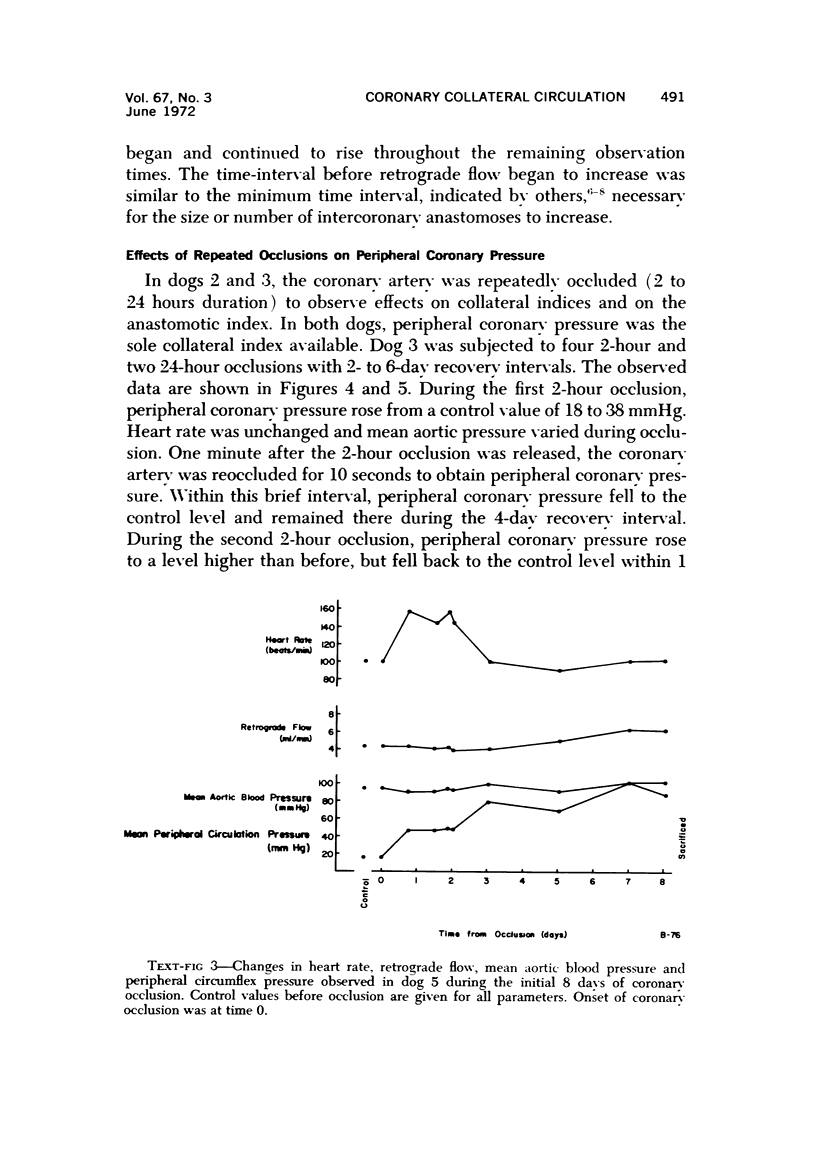
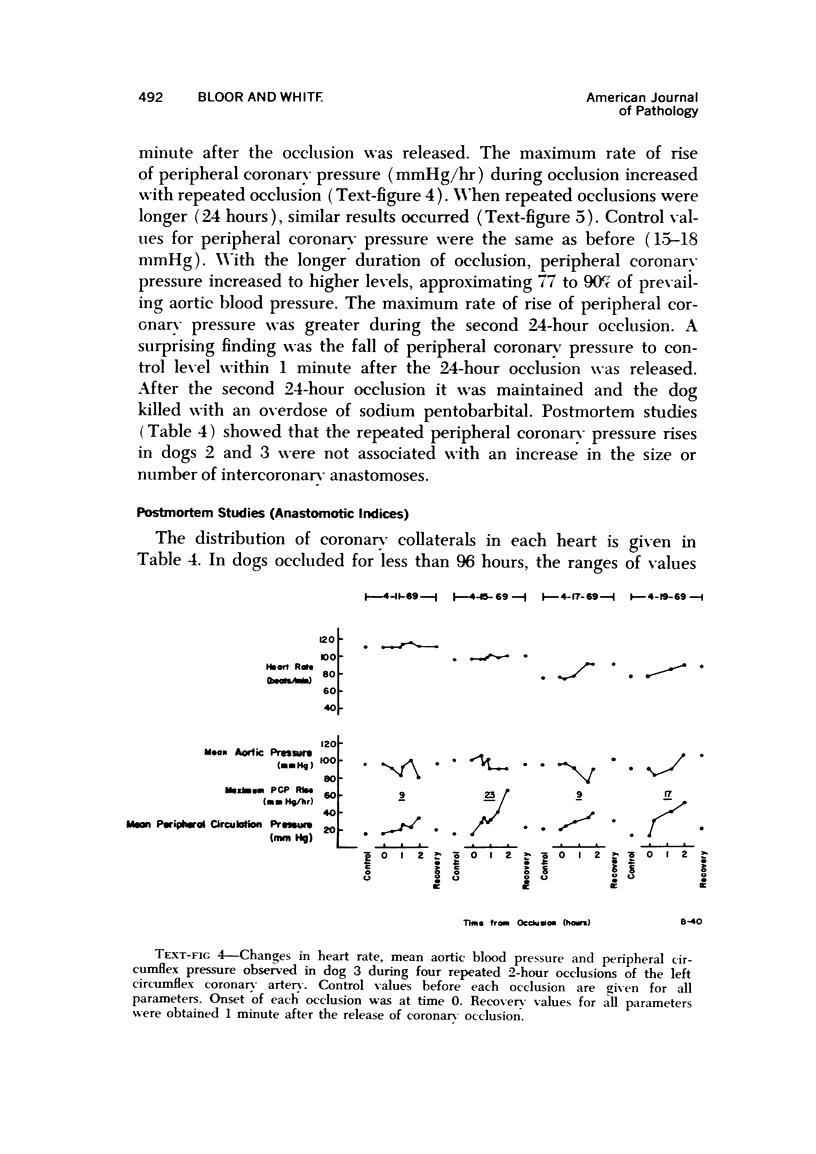
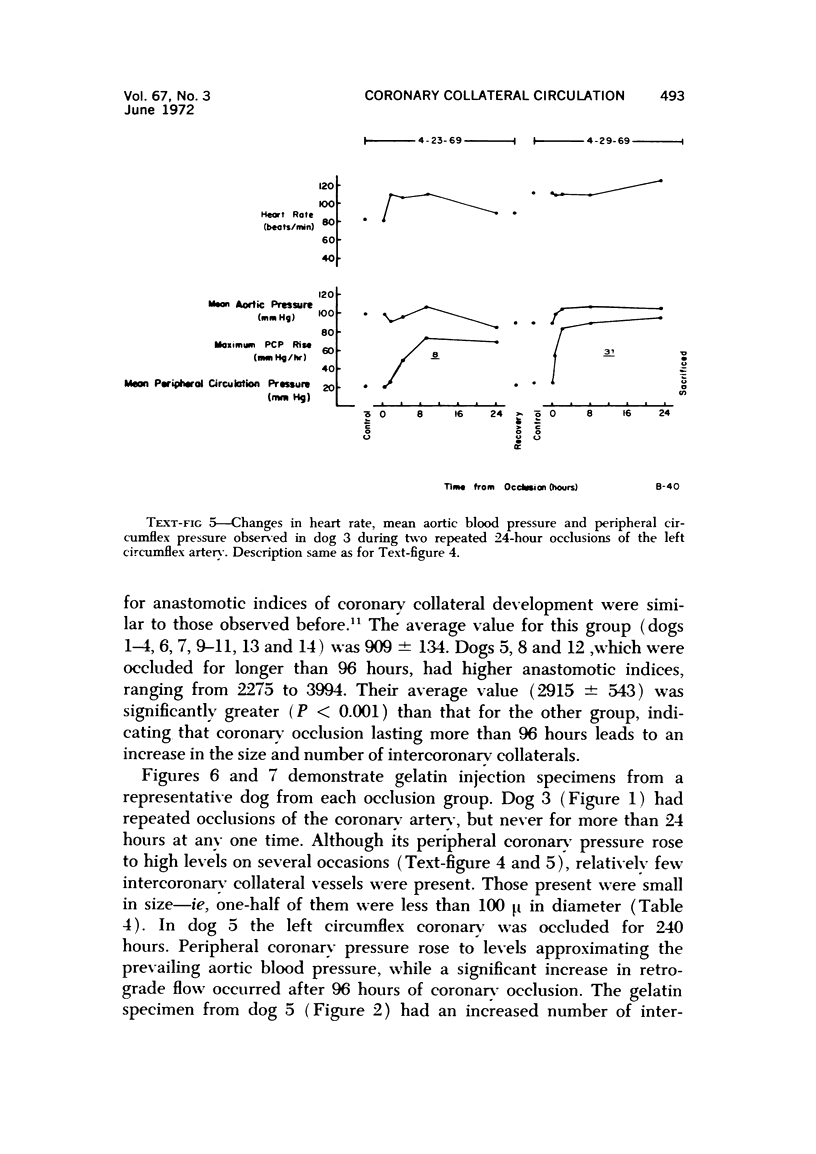

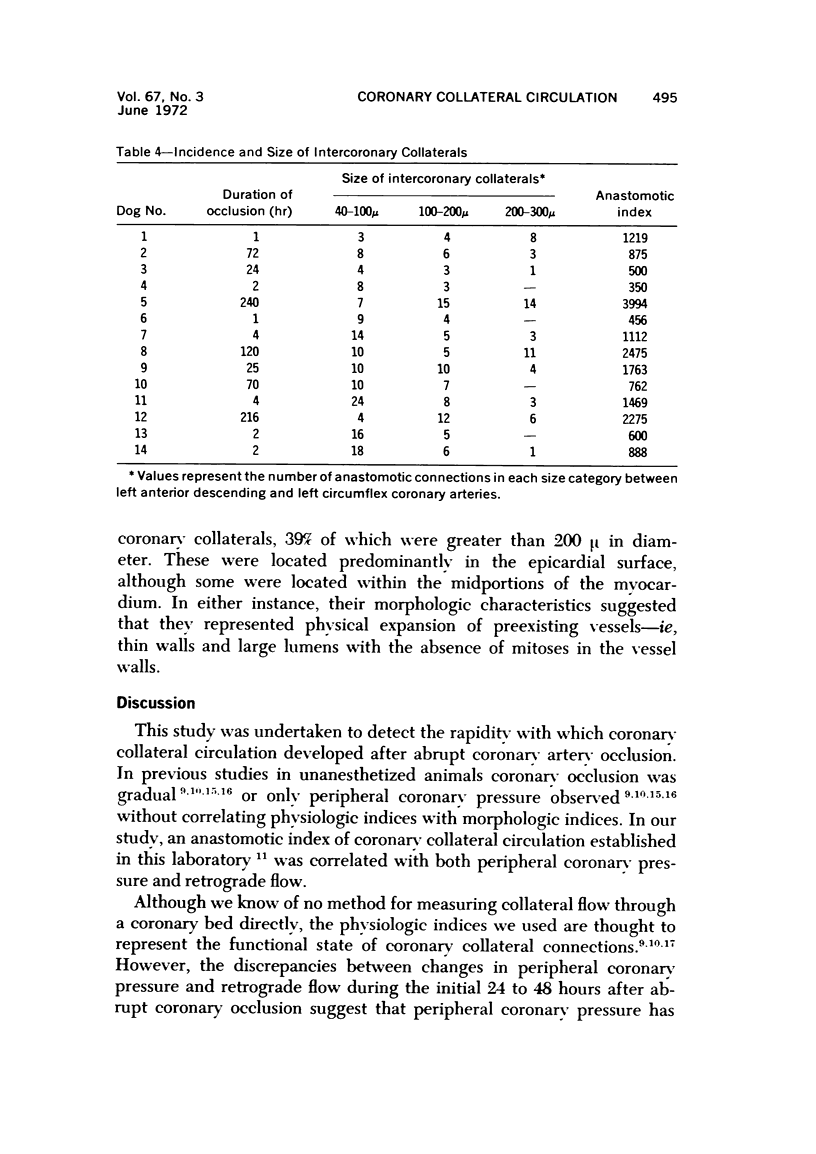

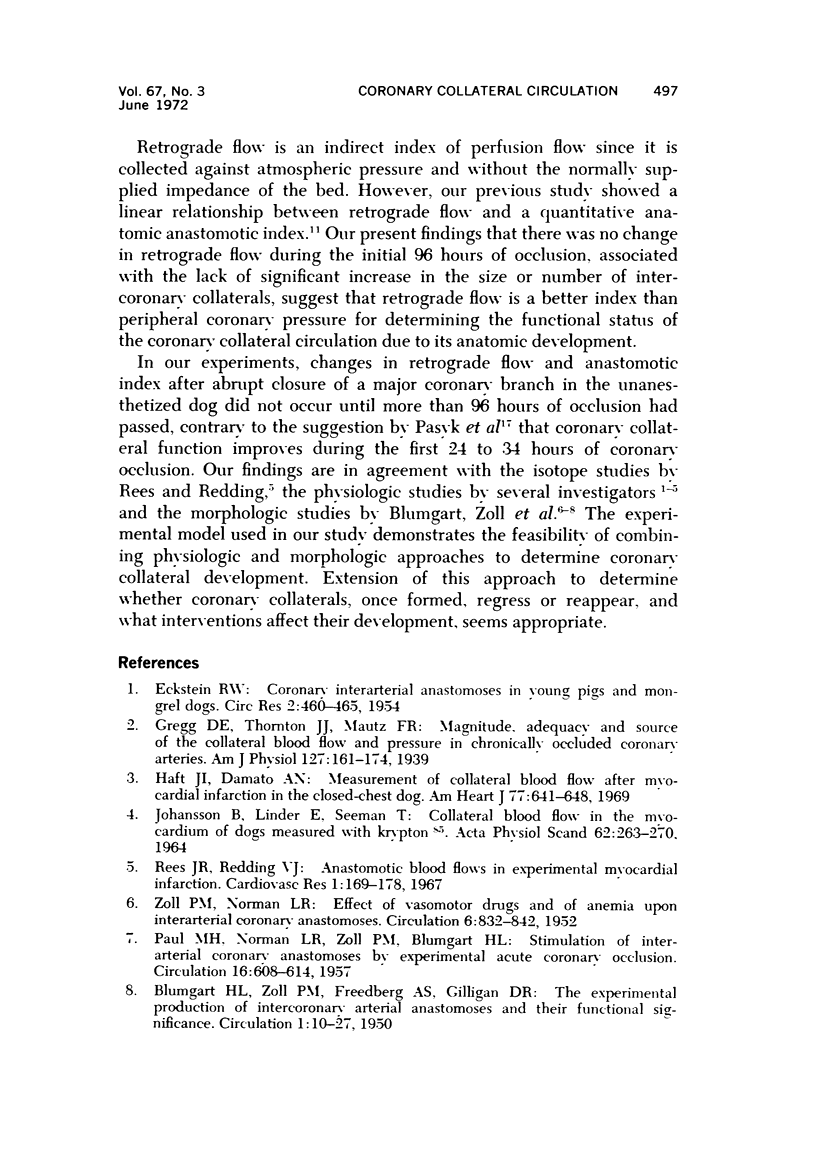

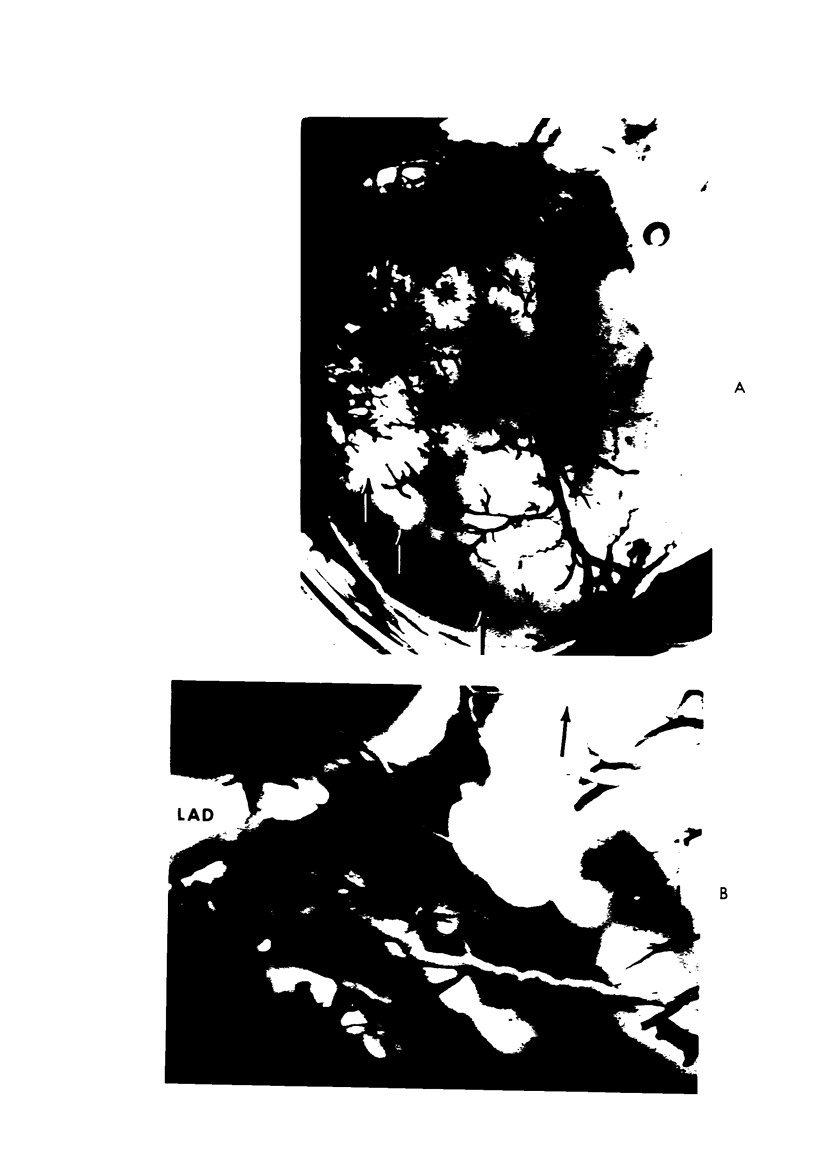
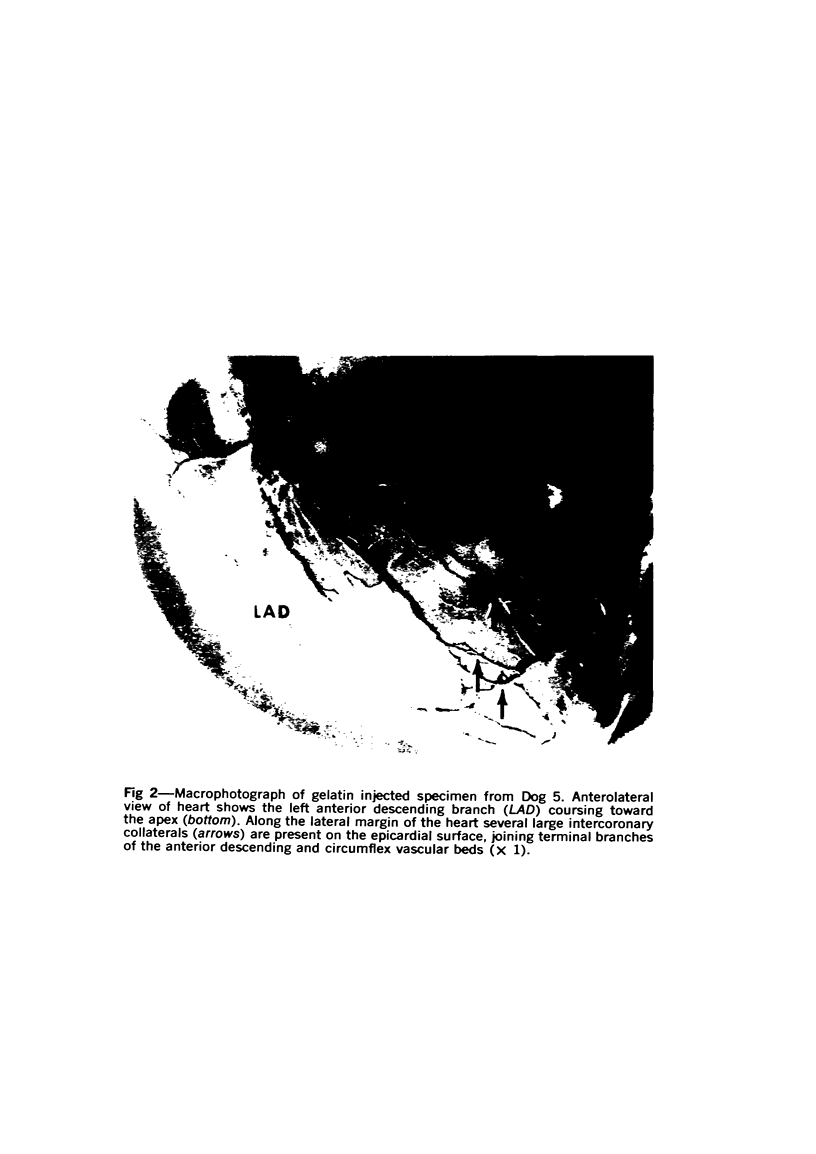
Images in this article
Selected References
These references are in PubMed. This may not be the complete list of references from this article.
- BLUMGART H. L., ZOLL P. M. The experimental production of intercoronary arterial anastomoses and their functional significance. Circulation. 1950 Jan;1(1):10-27, pl. doi: 10.1161/01.cir.1.1.10. [DOI] [PubMed] [Google Scholar]
- ECKSTEIN R. W. Coronary interarterial anastomoses in young pigs and mongrel dogs. Circ Res. 1954 Sep;2(5):460–465. doi: 10.1161/01.res.2.5.460. [DOI] [PubMed] [Google Scholar]
- HERD J. A., BARGER A. C. SIMPLIFIED TECHNIQUE FOR CHRONIC CATHETERIZATION OF BLOOD VESSELS. J Appl Physiol. 1964 Jul;19:791–792. doi: 10.1152/jappl.1964.19.4.791. [DOI] [PubMed] [Google Scholar]
- Hood W. B., Jr Experimental myocardial infarction. 3. Recovery of left ventricular function in the healing phase. Contribution of increased fiber shortening in noninfarcted myocardium. Am Heart J. 1970 Apr;79(4):531–538. doi: 10.1016/0002-8703(70)90259-0. [DOI] [PubMed] [Google Scholar]
- JOHANSSON B., LINDER E., SEEMAN T. COLLATERAL BLOOD FLOW IN THE MYOCARDIUM OF DOGS MEASURED WITH KRYPTON. Acta Physiol Scand. 1964 Nov;62:263–270. doi: 10.1111/j.1748-1716.1964.tb03973.x. [DOI] [PubMed] [Google Scholar]
- Khouri E. M., Gregg D. E., Lowensohn H. S. Flow in the major branches of the left coronary artery during experimental coronary insufficiency in the unanesthetized dog. Circ Res. 1968 Jul;23(1):99–109. doi: 10.1161/01.res.23.1.99. [DOI] [PubMed] [Google Scholar]
- Khouri E. M., Gregg D. E., McGranahan G. M., Jr Regression and reappearance of coronary collaterals. Am J Physiol. 1971 Mar;220(3):655–661. doi: 10.1152/ajplegacy.1971.220.3.655. [DOI] [PubMed] [Google Scholar]
- Kumar R., Hood W. B., Jr, Joison J., Norman J. C., Abelmann W. H. Experimental myocardial infarction. II. Acute depression and subsequent recovery of left ventricular function: serial measurements in intact conscious dogs. J Clin Invest. 1970 Jan;49(1):55–62. doi: 10.1172/JCI106223. [DOI] [PMC free article] [PubMed] [Google Scholar]
- Menick F. J., White F. C., Bloor C. M. Coronary collateral circulation: determination of an anatomical anastomotic index of functional collateral flow capacity. Am Heart J. 1971 Oct;82(4):503–510. doi: 10.1016/0002-8703(71)90235-3. [DOI] [PubMed] [Google Scholar]
- Menick F. J., White F. C., Bloor C. M. Coronary collateral circulation: determination of an anatomical anastomotic index of functional collateral flow capacity. Am Heart J. 1971 Oct;82(4):503–510. doi: 10.1016/0002-8703(71)90235-3. [DOI] [PubMed] [Google Scholar]
- PAUL M. H., NORMAN L. R., ZOLL P. M., BLUMGART H. L. Stimulation of inter-arterial coronary anastomoses by experimental acute coronary occlusion. Circulation. 1957 Oct;16(4):608–614. doi: 10.1161/01.cir.16.4.608. [DOI] [PubMed] [Google Scholar]
- Pasyk S., Bloor C. M., Khouri E. M., Gregg D. E. Systemic and coronary effects of coronary artery occlusion in the unanesthetized dog. Am J Physiol. 1971 Mar;220(3):646–654. doi: 10.1152/ajplegacy.1971.220.3.646. [DOI] [PubMed] [Google Scholar]
- Rees J. R., Redding V. J. Anastomotic blood flow in experimental myocardial infarction. A new method, using 133-Xenon clearance, for repeated measurements during recovery. Cardiovasc Res. 1967 Apr;1(2):169–178. doi: 10.1093/cvr/1.2.169. [DOI] [PubMed] [Google Scholar]
- SARNOFF S. J., BRAUNWALD E., WELCH G. H., Jr, CASE R. B., STAINSBY W. N., MACRUZ R. Hemodynamic determinants of oxygen consumption of the heart with special reference to the tension-time index. Am J Physiol. 1958 Jan;192(1):148–156. doi: 10.1152/ajplegacy.1957.192.1.148. [DOI] [PubMed] [Google Scholar]
- Schelbert H. R., Covell J. W., Burns J. W., Maroko P. R., Ross J., Jr Observations on factors affecting local forces in the left ventricular wall during acute myocardial ischemia. Circ Res. 1971 Sep;29(3):306–316. doi: 10.1161/01.res.29.3.306. [DOI] [PubMed] [Google Scholar]
- Sham G. B., White F. C., Bloor C. M. A constrictive and occlusive cuff for medium and large blood vessels. J Appl Physiol. 1970 Apr;28(4):510–512. doi: 10.1152/jappl.1970.28.4.510. [DOI] [PubMed] [Google Scholar]
- ZOLL P. M., NORMAN L. R., CASSIN S. The effects of vasomotor drugs and of anemia upon interarterial coronary anastomoses. Circulation. 1952 Dec;6(6):832–842. doi: 10.1161/01.cir.6.6.832. [DOI] [PubMed] [Google Scholar]




